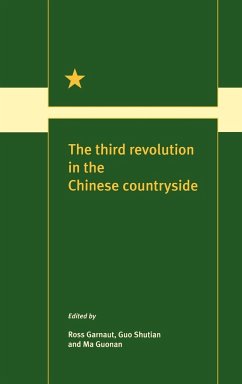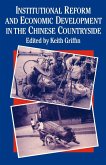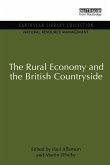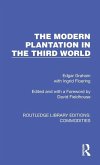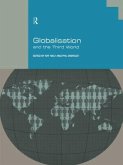The first revolution in the Chinese countryside was the land reform after the proclamation of the People's Republic of China in 1949. The second was decollectivization of agriculture and shift to the household responsibility system as a basis for agricultural production. This set the scene for the freeing of markets for farm products and linking of domestic markets to international markets; this book explores this third revolution. The first section of this book covers the issues of poverty in China and feeding the population. The second section describes price reforms in agricultural markets in China. The next two parts discuss international and regional issues of China's agricultural economy. Finally, there are contributions on what institutional changes have been associated with the third agricultural revolution. The contributions are from a team of experts on the Chinese economy led by Professor Garnaut.
Table of contents:
1. The third revolution Ross Garnaut and Ma Guonan; Part I. Feeding the People: 2. Success in early reform: setting the stage Justin Yifu Lin; 3. Completing the third revolution Yiping Huang; 4. China's grain demand: recent experience and prospects to the year 2000 Ross Garnaut and Ma Guonan; 5. Rural poverty in post-reform China Carl Riskin; Part II. Marketing and Price Reform: 6. Price reform for agricultural products Li Bingkun; 7. Grain marketing: from plan to market Tang Renjan; 8. Fertiliser prices Zhang Wen Bao and Zuo Chang Shen; 9. Agricultural wholesale markets Xu Boyuan; 10. The 'wool war' and the 'cotton chaos' - fibre marketing Zhang Xinohe, Lu Weiguo, Sun Keliang, Christopher Findlay, and Andrew Watson; 11. Conflict over cabbages: the reform of wholesale marketing Andrew Watson; Part III. Internationlization: 12. The World Trade Organization and agricultural development Ma Xiaohe; 13. Comparative advantage and the internationalization of China's agriculture Fang Cai; 14. A turning point in China's agricultural development Ross Garnaut, Fang Cai, and Yuping Huang; Part IV. Regional Issues: 15. The grain economy of Guangdong: internationalization or East Asian style protectionism Ross Garnaut and Ma Guonan; 16. Grain production and regional economic change Li Qingzeng, Andrew Watson, and Christopher Findlay; 17. Regional inequality in rural development Ke Bingsheng; Part V. Institutional Change: 18. China's rural property rights system under reform Chen Fan; 19. 'All the tea in China': the reformation and transformation of the tea industry Dan Etherington and Keith Forster; 20. The growth of rural industry: the impact of fiscal contracting Andrew Watson, Christopher Findlay, and Chen Chunlai; References; Index.
The changes in China up to the 1980s led to the third revolution in the Chinese countryside. This book has contributions from a team of experts on the Chinese economy, on issues of poverty, price reforms, international issues of China's agricultural economy, and the associated institutional changes.
Recent economic and institutional changes in Chinese agriculture.
Table of contents:
1. The third revolution Ross Garnaut and Ma Guonan; Part I. Feeding the People: 2. Success in early reform: setting the stage Justin Yifu Lin; 3. Completing the third revolution Yiping Huang; 4. China's grain demand: recent experience and prospects to the year 2000 Ross Garnaut and Ma Guonan; 5. Rural poverty in post-reform China Carl Riskin; Part II. Marketing and Price Reform: 6. Price reform for agricultural products Li Bingkun; 7. Grain marketing: from plan to market Tang Renjan; 8. Fertiliser prices Zhang Wen Bao and Zuo Chang Shen; 9. Agricultural wholesale markets Xu Boyuan; 10. The 'wool war' and the 'cotton chaos' - fibre marketing Zhang Xinohe, Lu Weiguo, Sun Keliang, Christopher Findlay, and Andrew Watson; 11. Conflict over cabbages: the reform of wholesale marketing Andrew Watson; Part III. Internationlization: 12. The World Trade Organization and agricultural development Ma Xiaohe; 13. Comparative advantage and the internationalization of China's agriculture Fang Cai; 14. A turning point in China's agricultural development Ross Garnaut, Fang Cai, and Yuping Huang; Part IV. Regional Issues: 15. The grain economy of Guangdong: internationalization or East Asian style protectionism Ross Garnaut and Ma Guonan; 16. Grain production and regional economic change Li Qingzeng, Andrew Watson, and Christopher Findlay; 17. Regional inequality in rural development Ke Bingsheng; Part V. Institutional Change: 18. China's rural property rights system under reform Chen Fan; 19. 'All the tea in China': the reformation and transformation of the tea industry Dan Etherington and Keith Forster; 20. The growth of rural industry: the impact of fiscal contracting Andrew Watson, Christopher Findlay, and Chen Chunlai; References; Index.
The changes in China up to the 1980s led to the third revolution in the Chinese countryside. This book has contributions from a team of experts on the Chinese economy, on issues of poverty, price reforms, international issues of China's agricultural economy, and the associated institutional changes.
Recent economic and institutional changes in Chinese agriculture.

